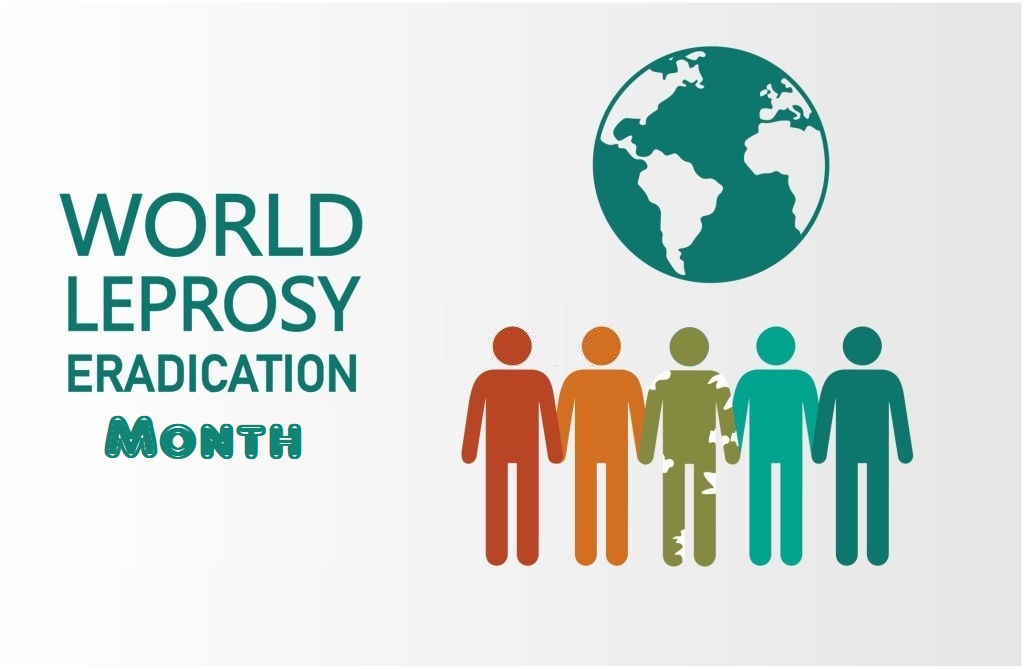World Leprosy Eradication Month (Hansen's Disease)
12th January 2022

The last Sunday of the month of January is celebrated as World Leprosy Eradication Day across the world. It basically aims to raise awareness about leprosy. Leprosy is also referred to as Hansen's disease. It was named after Norwegian physician Gerhard Henrik Armauer Hansen.
Fortunately, the stigma and bias against leprosy have reduced significantly. Due to the accessibility of operative drugs to cure, access to technology for primary diagnosis, prevention and restoration of deformities all of them made this possible. Governments and administrations of various countries also have taken the different Leprosy Control Programmes.
According to authorized figures from 161 countries from the 6 WHO Regions, there were 202-256 new leprosy cases registered worldwide in 2019! Of them, 14 893 were children below 14 years.
What is Leprosy Eradication?
Leprosy is basically an infectious chronic bacterial disease. It is an infectious skin and nerve ailment. Anybody can get affected with leprosy, but children seem to be more vulnerable than adults. Unfortunately, till now it is not clear how the germ is spread. The disease is caused by a bacillus, Mycobacterium leprae, which multiplies gradually.
Leprosy has traditionally been classified into two major types –
- Tuberculoid
- Lepromatous
People with tuberculoid leprosy have partial disease and comparatively few bacteria in the skin and nerves. While lepromatous patients have widespread ailment and large numbers of bacteria.
However, experts say that the germs probably enter the body through the nose and probably through broken skin. The germs get in the air through nasal ejection of untreated lepromatous patients. The disease spreads through droplets from the nose or the mouth if the affected person sneezes or coughs. Please note, in most cases, a person will not infect others within a day of starting treatment with multidrug remedy.
The World Health Organisation (WHO) reports, leprosy can also lead to depression. Furthermore, the signs of advanced leprosy can include - Paralysis and crippling of hands and feet, shortening of toes and fingers due to reabsorption, chronic non-healing ulcers on the bottoms of the feet, blindness and nose deformity.
Signs and Symptoms of Leprosy
Some of the major symptoms of leprosy consist of ---
- Light-coloured or red skin patches with reduced sensation
- Numbness and weakness in hands and feet
- Pain in the joints
- Swellings or rashes on the skin
- Reduced sensation of touch, pins and needles
- Growths (nodules) on the skin
- Thick, stiff or dry skin
- Loss of eyebrows or eyelashes
Is Leprosy Curable?
Well, the best way to stop the spread of leprosy is the primary diagnosis along with the treatment of people who are infected. Immediate and yearly checkups are suggested for at least five years after last contact with a person who is communicable.
Patients with leprosy have to be treated by a doctor who has good experience with the disease. Leprosy is treatable with multidrug therapy (MDT). Since 1995 WHO has provided MDT free of cost. But if it remains untreated, it will cause advanced and permanent damage to the skin, nerves, limbs, and eyes.
Regrettably, there is no vaccine available to precisely prevent leprosy. Nevertheless, the vaccine against tuberculosis (TB), called the BCG vaccine, may deliver some protection against leprosy.
The Bottom Line
The Leprosy Eradication disease is treated with a mixture of antibiotics. As we all know early intervention is the key for special education, hence, the Special Education Courses for Teachers programs are preparing teaching professionals for the future. Also, it is extremely important that the disease be identified as early as possible, before any everlasting nerve damage happens.
Written By : Victoria Lewis

